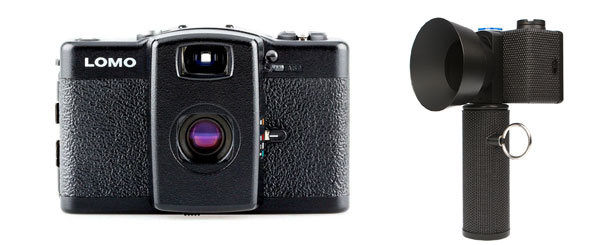
 |
|
The Lomo LC-A+ Russian Lens camera, left, and the Spinner 360, which rotates to produce panoramic photos. [Photo/Agencies] |
From the death rattle of companies like Kodak to the popularity of apps like Instagram that transform cellphone snaps into vintage-looking works of art, amateur film photography seems destined for the graveyard of obsolete technologies.
Yet, Lomography, a company and organization that champions the use of analog film photography, has found a foothold in a rocky market.
Lomography got its start 20 years ago in Austria, by a group of ambitious photographers and artists who stumbled across a cheap Russian camera called the Lomo that used 35-millimeter film. The Lomo produced charming photographs that often contained artsy blurry streaks and were oversaturated with color due to the camera’s body design and construction.
Matthias Fiegl, one of the artists who went on to found the company, would smuggle the cameras back from Russia to Western Europe in the early 1990s and sell them among his friends and then host exhibitions to celebrate the art photographs.
The company cultivated a following of niche users who liked the funky effects the camera lent the final prints, and it managed to maintain that appeal despite the rise of an on-demand world where each moment is documented, tweaked with a filter and uploaded to the Web.
"Instant photography is covered by digital cameras and the iPhone," said Mr. Fiegl. "You want to share a photo of something right now, you are covered. But our version of analog is different because it’s fun and unexpected, you don’t know what’s coming and you won’t, for a few days or a week, when you get the pictures back."
|
|
|
The Diana F+ [Photo/Agencies] |
"We now take so many digital photographs, its hard to sift through them to find vacation photos from five years ago," he said.
But a small stack of prints, he said, particularly ones that have sun spots, bleached out colors, might be something you’d make a point not to lose.
Which isn’t the say the company eschews social media. They’ve embraced it, with a healthy Facebook community and by using the Web to organize Lomographer meet-ups around the world.
"Don’t get me wrong," he said. "We all love Instagram. But this is not the same thing."
Even so, Mr. Fiegl said the company had to send Instagram a letter about six months ago asking them to rename a filter that had been called “Lomo.”
"Even now, I’m not sure that was a smart move,” he said. “We would have 30 million, maybe 100 million people, knowing our name. But what we are trying to do is so different I didn’t want to confuse it."
Part of the company’s longevity lies in its history. In 1998, several years before sites like Flickr, MySpace, Friendster and Facebook came on the scene, Lomography had a Web site where people could upload, tag and share their quirky photographs. Now, the site has collected more than 10 million pictures and attracts 3 million visits each month. Lomography was informally distributing cameras around the world and selling them in museums, but the traction of their early Web community eventually led the company to open a Web shop so people could place orders online.
By this time, Lomography was designing and manufacturing, with the help of manufacturers in China and Russia, its own line of analog film cameras, kitschy and cute machines with bulky plastic bodies with names like the Diana; the Horizon, a camera that captures panoramic vistas; and the Pop 9, a shiny gold camera that captures nine frames simultaneously.
A few years later, in 2006, when most companies were shifting their business to the Web, Mr. Fiegl decided it was time for Lomography to move offline. The company began opening retail stores around the world, from Hong Kong to Paris, London and New York. The stores, which sell cameras, film, photo books and accessories, also serve as places for Lomographers to meet up, host exhibitions and trade tips.
The company now has 35 stores in two dozen different countries around the world, and each year, the company sells half a million cameras worldwide. Last year, they sold 2 million rolls of film.
"We’re growing year-over-year. Our retail sales are more powerful than the Web," said Mr. Fiegl. "People play around with the cameras, they understand it and it convinces them."
The company is future-proofing its business by preparing for an era when the rest of the vestiges of analog photography become extinct. They have installed film processing facilities in some of their retail stores and offer a mail-in development service for their users who don’t live near a drugstore or place that process photos.
Although Lomography regularly designs and releases new products, including a 35-millimeter movie camera called the LomoKino and different kinds of film each year, it has no plans to make or market a digital camera.
"We’ve considered it," said Mr. Fiegl. "But in a way, Lomography is freer. We don’t have much competition and we don’t have to top anyone’s megapixel count. We’ve decided to stick with the analog side of things."
The New York Times